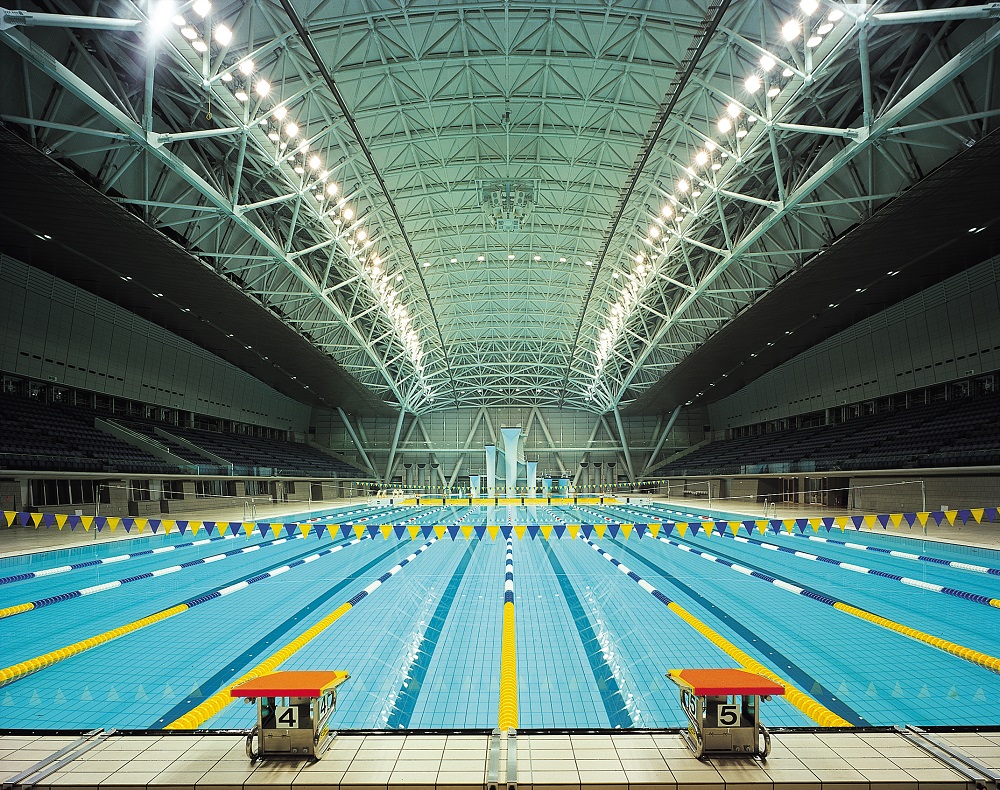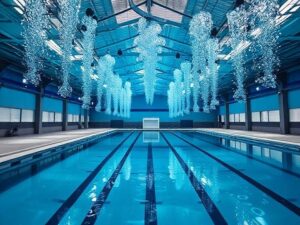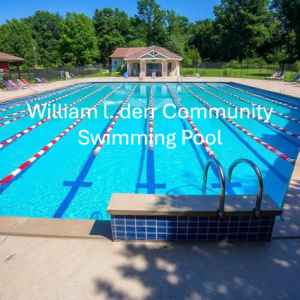Yokohama International Swimming Pool Converted to Basketball Court: A Unique Multi-Use Transformation

In modern cities, sports venues need to be flexible. One excellent example is the Yokohama International Swimming Pool converted to basketball court during autumn and winter. This practice is not just a novelty — it reflects clever design, community needs, and the trade-offs of multi-purpose facilities. In this post, we’ll explore how this conversion works, its history, what it offers, and what challenges it faces.

What is the Yokohama International Swimming Pool Converted to Basketball Court?
The Yokohama International Swimming Pool converted to basketball court refers to the seasonal use of the main pool hall at Yokohama’s “Water Arena” (横浜国際プール, Yokohama Kokusai Pool), where the pool is transformed into a sports floor for basketball (and other sports) in the cooler months.
Here are key facts:
- The facility opened in 1998 in Tsuzuki-ku, Yokohama.
- It has a large main pool: 50 m in length × 30 m wide, with 10 lanes. There is also a diving pool and a “sub-pool” with 8 lanes.
- In fall/winter, panels are set up over the main pool to create a sports court, accommodating basketball, tennis, futsal, handball, etc. The venue becomes home court for the Yokohama B-Corsairs, a professional B.League basketball team.
How the Conversion Process Works
Converting the pool into a basketball-court (or multi-sport floor) is more complex than just laying a floorboard. Here’s how it is done:
- Covering the pool basin: Specialized panels/platforms are placed over the empty or drained pool (or covered) to provide a flat, stable floor. These must be strong enough to bear the weight of players, equipment, seating, and spectators.
- Surface preparation: The panels are finished to produce a non-slippery sports surface (although some sources note that even with panels, the floor can be slippery).
- Seating reconfiguration: Spectator seating is arranged as appropriate for basketball or other events. Because the venue has a capacity around 5,000 for basketball events.
- Seasonal scheduling: The pool is used in spring and summer as a full aquatic centre, then in autumn/winter as a multi-sport arena.
Advantages of the Yokohama International Swimming Pool Converted to Basketball Court Model
Turning a swimming pool facility into a basketball court (and multi-sport court) offers several benefits:
- Maximizing usage: Instead of lying mostly idle in off-season for swimming, the facility remains active year-round.
- Economic efficiency: By hosting different types of events and sports, it can bring in more revenue and justify the maintenance costs. Professional basketball games like those of the Yokohama B-Corsairs attract spectators.
- Community engagement: Local sports clubs, amateur teams, and general public usage benefit from having indoor courts available in colder or wet months. (Shift)
- Design showcase: The adaptive design shows how infrastructure can be built flexibly to serve multiple needs, which is increasingly important in urban planning.
Challenges & Trade-Offs When the Yokohama International Swimming Pool Converted to Basketball Court
Of course, such transformations are not without downsides.
- Slipperiness and safety: Some sources note that even with panels, the sports floor can be slippery. This may pose risk to athletes, especially in fast movement sports like basketball.
- Logistics & cost: Installing, removing, storing panels, reconfiguring seating, adjusting lighting etc. all require labor, time, and maintenance cost.
- Wear & tear: Constant converting could stress structural, flooring, or mechanical systems more than a facility that’s single-use.
- Compromise in design: Because the structure was originally designed for aquatic sports, adjustments for visibility, acoustics, ventilation may be less optimal for basketball or indoor court sports.
- User expectations: Spectators and athletes may have expectations for a dedicated basketball arena that such a converted facility may not fully meet (e.g. flooring response, ceiling height, sight lines).
Impact & Future of the Yokohama International Swimming Pool Converted to Basketball Court Use
The ongoing use of this model has broader implications:
- It demonstrates how sports facility design can combine seasonal flexibility. As climate or cost pressures increase, facilities that can serve multiple purposes gain in importance.
- The Yokohama B-Corsairs have used the space as their home arena; it helps growing the popularity of basketball in Japan.
- There are discussions (as of 2024) about redevelopment plans for the facility, possibly eliminating the main pool in the future. One justification mentioned is that sports arena usage has attracted more users than the pool in recent years.
- That raises questions: if the main pool is removed or downsized, how would that affect the converted court aspect? Would the architecture adjust to make a more permanent court facility? These are debates between preserving aquatic sports access and meeting demand for courts.
Conclusion: Why the Yokohama International Swimming Pool Converted to Basketball Court is More than a Gimmick
The notion of the Yokohama International Swimming Pool converted to basketball court might at first sound unusual — but it’s a smart solution to a common problem: how to make expensive public sports facilities justify their cost by being used all year. Through thoughtful design, operational flexibility, and community support, Yokohama shows how a swimming pool arena can become a concert hall, a basketball court, or a futsal pitch depending on the season.
However, this flexibility comes with challenges in safety, comfort, and maintenance. And now that user demand may be shifting, the future may see more permanent changes. Whatever happens, this case serves as an instructive example for other cities: multi-use facilities can deliver more value, but only if planned and managed well.



